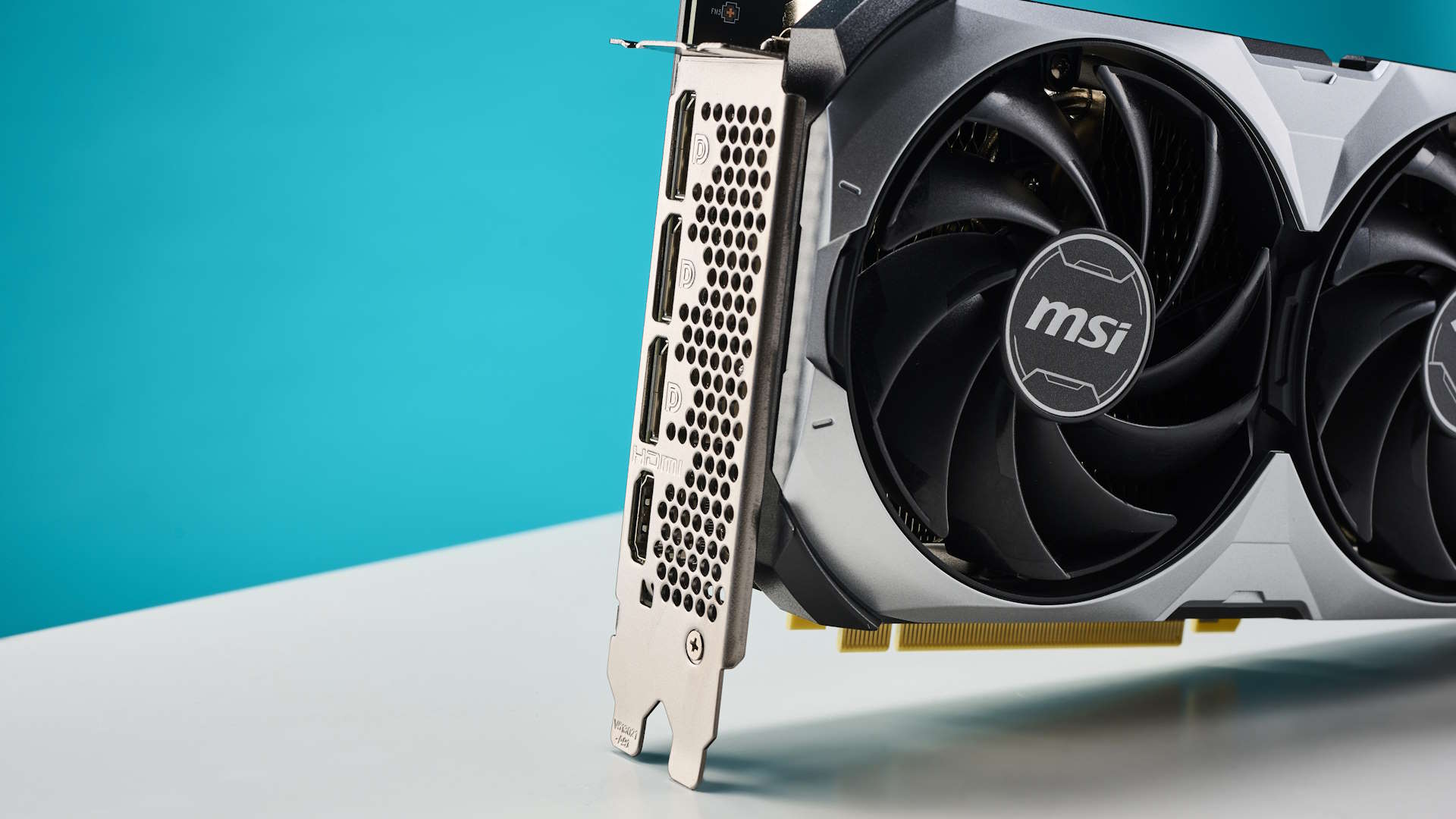
No amount of BIOS hacks will turn it back into a full-blown RTX 4090, though.
Chip manufacturing isn’t perfect and every wafer a foundry churns out will have dies in it that can’t be used for their originally intended purpose. That doesn’t mean they can’t be used at all, though, and in the case of Nvidia’s hulking AD102 GPU, normally used in RTX 4090 graphics cards, MSI is buying defective ones and using them in at least one of its GeForce RTX 4070 Ti Super models.
The model in question is a forthcoming GeForce RTX 4070 Ti Super Ventus 3X Black OC (err, are you sure you couldn’t make that name any longer, MSI?) and it was noticed by X-user wxnod (via BenchLife). If you’re wondering how we know it’s using a cut-down RTX 4090 chip, there are two clues.
First, the TGP (Total Graphics Power) figure is 295 W, which is 10 W higher than a standard RTX 4070 Ti Super. You might think that MSI has done this to improve a 4070 Ti Super’s ability to maintain an overclock but that’s not the case, as it doesn’t do this with its other overclocked models and neither does any other vendor.
The standard card uses a cut-down AD103 chip, normally housed in RTX 4080 cards, whereas the original RTX 4070 Ti uses an AD104. Both the AD103 and AD104 are much smaller chips than the massive AD102, and even though Nvidia has disabled nearly 10,000 shaders, just under a hundred 100 ROPs, half the L2 cache, and four memory controllers, there’s still an awful lot of silicon there.
That higher TGP could be because bigger dies are more able to absorb and dissipate heat than smaller dies, or it could be the remaining circuitry of the AD102 still uses power, even though no game will ever get to use it.
Another clue is the weight and size of the Ventus 3X Black OC card, given in the model’s datasheet (pdf warning). With dimensions of 322 x 136 x 62 mm (12.7 x 5.4 x 2.4 inches) and a weight of 1.464 kg (3.22 lbs), it’s considerably bigger than most RTX 4070 Ti Super cards. For example, MSI’s Gaming X Slim version of that GPU is 307 x 125 x 51 mm and 1.1 kg.
GeForce RTX 4090 cards are huge and not just the heatsink and fan shroud—the printed circuit board (PCB) that houses the graphics chip is big, too. MSI is highly unlikely to have made a custom PCB just for this particular RTX 4070 Ti Super model and is probably repurposing one of its RTX 4090 designs.
Standard RTX 4070 Ti Super cards are smaller and lighter than MSI’s AD102-powered Black OC model (Image credit: Future)
The final clue is…well, it’s not a clue. BenchLife states that the “AIC informed us in the letter that it is AD102-175”, with AIC referring to MSI (AIC stands for add-in card). Yeah, I know I could have just written that right at the beginning but where’s the fun in that?
Now, before you start entertaining any ideas of buying an MSI GeForce RTX 4070 Ti Super Ventus 3X Black OC, running some BIOS hacks, and becoming the proud owner of an RTX 4090 for half the price, none of the disabled sections of the AD102 chip can be reactivated. Nvidia no longer uses software to switch off parts; it’s all done physically while the die is being processed for packaging.
Don’t expect the MSI GeFor…oh, I’m not writing that out all over again…Black OC card to offer any more performance than a standard RTX 4070 Ti Super, even with its higher power limit. As anyone with an RTX 40-series graphics card will tell you, Nvidia’s Ada Lovelace chips don’t really run much faster with extra power—they just get hotter.
(Image credit: Future)
Best CPU for gaming: The top chips from Intel and AMD.
Best gaming motherboard: The right boards.
Best graphics card: Your perfect pixel-pusher awaits.
Best SSD for gaming: Get into the game ahead of the rest.
Graphics card vendors have been using heavily cut-down top-end GPUs in lower-tier models for years, certainly for as long as I can remember. Chip manufacturing will always produce dies that just can’t be used for their intended application but still have sufficient working parts to be used elsewhere. That’s how most of the variants of an SKU segment are made, such as AMD’s Radeon RX 7900 range, which all use a Navi 31 chip.
Over time, these defective dies build up in AMD, Intel, and Nvidia’s inventory and once they’ve reached a certain limit, they can be sold off in sufficient quantities for AIB partners to use in their models. This is especially true when nearing the end of a generation, as chip makers prefer to switch to their huge pile of defect dies, rather than continue mass-producing full-spec processors.
Of course, Consumers don’t really benefit from this process but it’s kinda neat having an RTX 4090 GPU in an RTX 4070 Ti Super. It’s a bit like saying “I’ve got a Ferrari engine in my Ford Focus”, albeit one with most of the cylinders filled with lead. Ford performance, of course, but there’s still a prancing horse in there somewhere.






